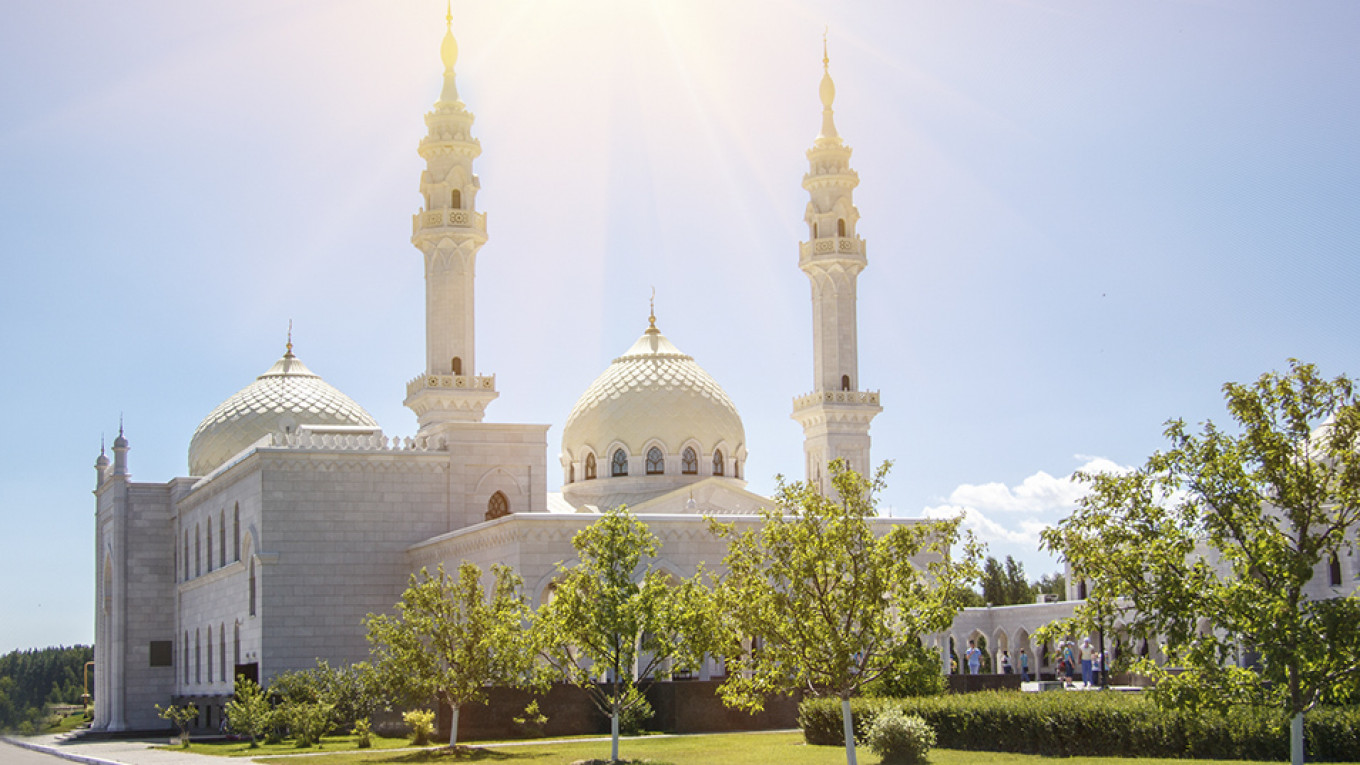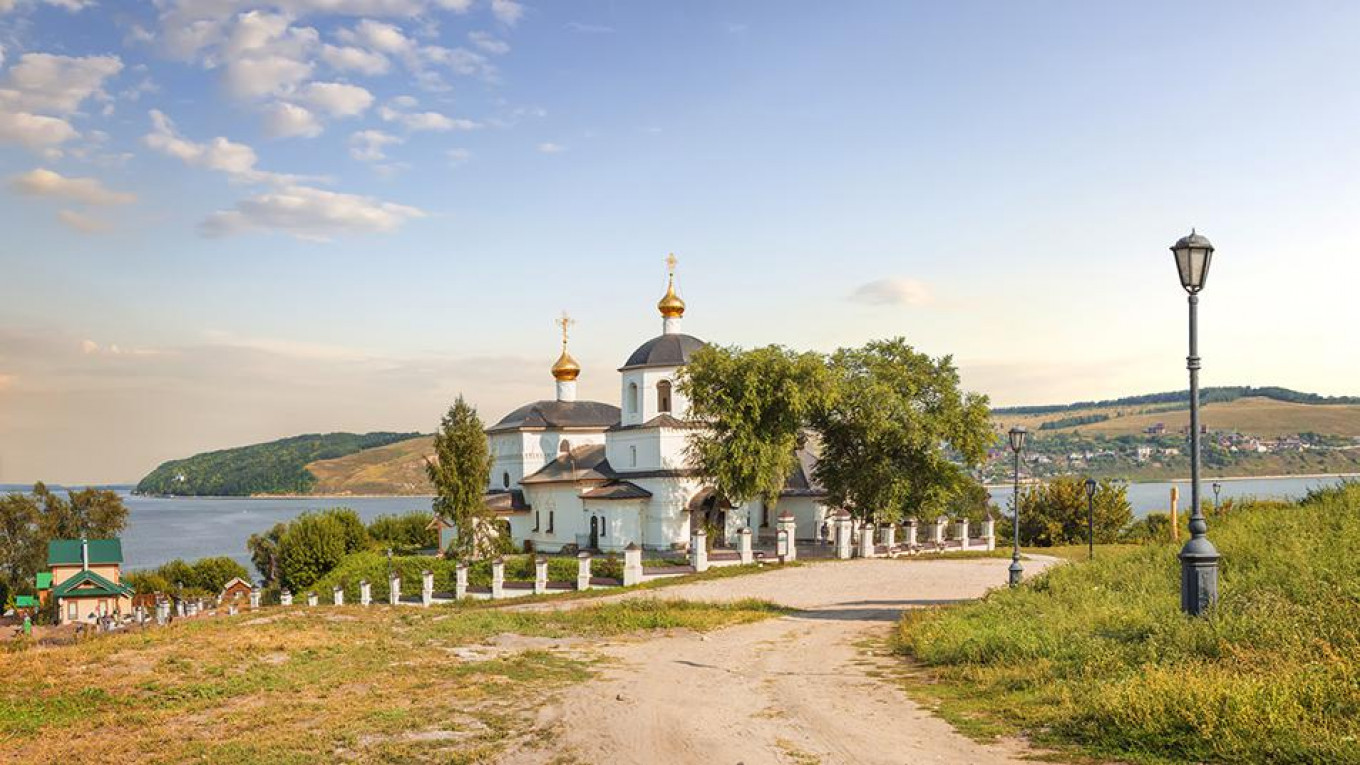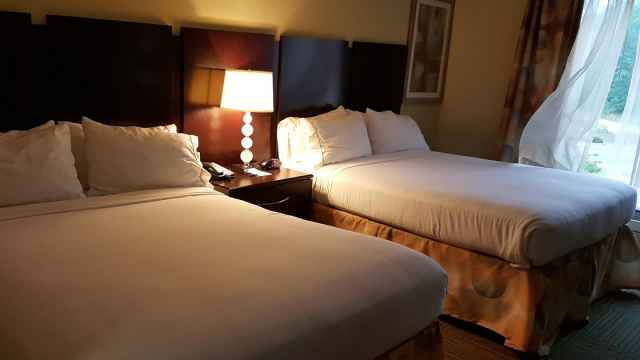Want to get out of the city and explore more of the surrounding region? We’ve got the perfect spots for you.
Sviyazhsk
Sviyazhsk, just 58 kilometers from Kazan, is an ideal day trip. The best and most picturesque way to get there is on a boat called an omik, and it only takes an hour and a half to get to the place. Formerly a military fortress in the war between Russia and the Kazan Khanate, today it’s a quiet museum town with 16th and 17th century churches and monasteries.
Sviyazhsk was founded in 1551 by Ivan the Terrible as the launching ground for the siege of the Kazan Khanate capital. Wood for the fortress was cut near Uglich and rafted down the Volga river. The fortress at the top of the hill went up in a matter of mere days; Kazan fell a few months later.
Sviyazhsk is also considered the place where the “Red Terror” started in earnest during the Civil War, where Leon Trotsky ordered every tenth Red Army soldier executed for failing to defend Kazan against Czech soldiers on the side of the White Army.
Sviyazhsk wasn’t always an island city. Construction of the Kuybyshev hydroelectric plant in the middle of the 20th century led to the creation of a large water reservoir, which separated Sviyazhsk from the shore. In 2008, a dam was built, and today it’s much easier to reach the island.
There are two medieval monasteries in Sviyazhsk — John the Baptist and Uspensky (Assumption) — but both have only partially survived. After the October Revolution in 1917, Uspensky first became a prison and then a mental hospital. The Assumption Cathedral in Uspensky has been reconstructed and is one of the main attractions of the island city. St. Nicholas Church, which was also part of Uspensky Monastery and built in the 16th century, also survives. The wooden Church of the Holy Trinity, which was once part of the John the Baptist monastery, is probably the most authentic sight, also constructed in the 16th century.
The largest church on the island is the Cathedral of the Icon of the Virgin, “Joy of All Who Grieve.” Built in 18981906 in the neo-Byzantine style, it’s one of the sights visible from the river when you approach Sviyazhsk by boat. Tourists can also visit stable yards, craft villages and historical reconstruction sites.
OPEN Tues. to Thurs. and Sun. from 10 a.m. to 5 p.m.,
Fri. and Sat. from 10 a.m. to 6 p.m.
TICKETS from 500 rubles
Boat leaves from Kazan river port (Ulitsa Devyatayeva, 1) at 8:20 a.m. You can also take the commuter train to Sviyazhsk station and then the bus. ostrovgrad.org
Bolgar
Bolgar is a small town located 191 kilometers from Kazan; it is best reached by boat or car (taxi or a rental). Bolgar was built in the 1950s (first called Kuybyshev) near the site of ancient Bulgar or Great Bulgar, which was founded in the 10th century and at one point was the main city of Volga Bulgaria.

The site of ancient Bulgar has been added to UNESCO’s World Heritage List and all the main sights have been restored. Bolgar boasts the world’s largest Koran, as well as a 16-meter-high minaret that’s ironically called the Small Minaret (climb to get a good view of the ancient Bulgar site), built in the 12th century. There’s a khan’s mausoleum right next to it.
The main Congregational Mosque has also been restored, complete with the Tall Minaret. The original building dates back to the 13th century. The 14th century Northern Mausoleum is located right next to it. There are also several ruins in the area; they are the vestiges of palaces and baths that you can explore on foot.
If you’re visiting kazan with children, be sure to visit the camel farm in Bolgar.
Bolgar’s largest landmark is the newly built White Mosque, which has been nicknamed the “Tatar Taj Mahal.” There’s also a Museum of Bread, which provides total immersion into the life of a Tatar village at the turn of the 20th century, as well as a brand new museum devoted to the life of the nobility of the Spassky district, where Bolgar is located.
If archeology and history are not your thing, you can visit the camel farm and try some camel milk.
Great Bolgar Museum
OPEN Mon. to Fri. 8 a.m. to 5 p.m.,
weekends 8 a.m. to 6 p.m.
TICKETS 50 rubles
Ulitsa Nazarovikh, 67
Museum of Bread
OPEN daily from 8 a.m. to 5 p.m.
Ulitsa Lenina, 1a muzeji-hleba.ru
Camel Farm
OPEN daily
TICKETS 150 rubles
Ulitsa Baumana, 60 laidoya.ru
A Message from The Moscow Times:
Dear readers,
We are facing unprecedented challenges. Russia's Prosecutor General's Office has designated The Moscow Times as an "undesirable" organization, criminalizing our work and putting our staff at risk of prosecution. This follows our earlier unjust labeling as a "foreign agent."
These actions are direct attempts to silence independent journalism in Russia. The authorities claim our work "discredits the decisions of the Russian leadership." We see things differently: we strive to provide accurate, unbiased reporting on Russia.
We, the journalists of The Moscow Times, refuse to be silenced. But to continue our work, we need your help.
Your support, no matter how small, makes a world of difference. If you can, please support us monthly starting from just $2. It's quick to set up, and every contribution makes a significant impact.
By supporting The Moscow Times, you're defending open, independent journalism in the face of repression. Thank you for standing with us.
Remind me later.






